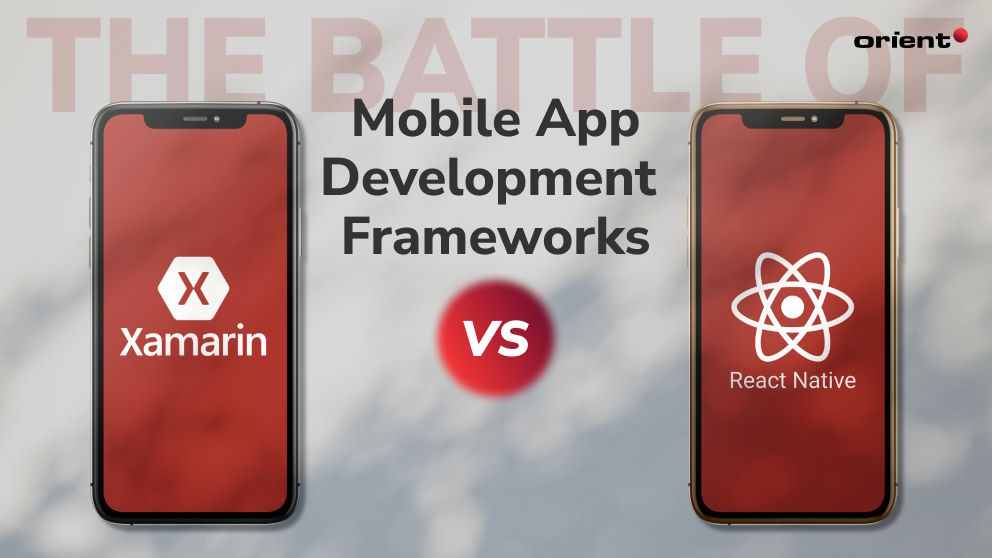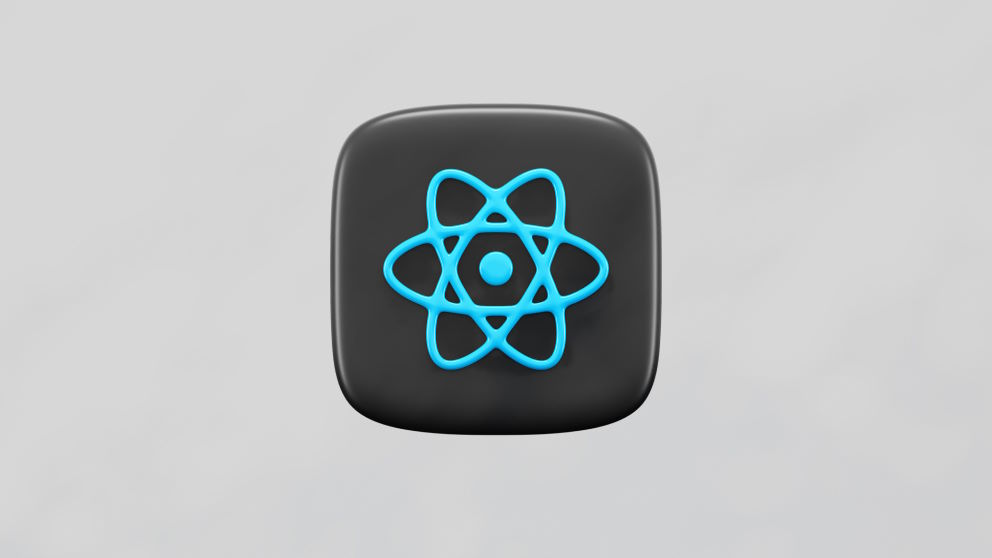The Battle of Mobile App Development Frameworks: Xamarin vs. React Native

Content Map
More chaptersThe number of mobile app downloads surpassed 200 billion in 2019, marking a constant increase since 2016. Predicted to continuously rise in all segments in the future, mobile app development is gradually becoming an indispensable component for many businesses in the process of attracting users and expanding customer segments.
The emergence of many different platforms, such as iOS and Android, adds complications to the mobile development processes. It is undeniable that native development using Swift or Java offers a high level of app performance and responsiveness as built natively for the platform; it requires much effort from developers to write and maintain code separately.
Cross-platform that allows coders to write code once and use it across multiple operating systems, saving time and effort, comes in this situation. Of the various frameworks and cross-platform development tools available for developing mobile applications, Xamarin and React Native are the two most powerful options due to their efficiency and accessibility. With separate pros and cons, what is the key to your project’s success?
Brief Overview of Xamarin

Xamarin is one of the top mobile app development platforms that has long gained popularity due to its efficiency in reaching a wider audience by targeting multiple platforms simultaneously using a shared codebase. With Xamarin, developers can write cross-platform mobile app logic in C# programming language once and share the majority of the code across different platforms, including iOS, Android, Windows, etc. In other words, using Xamarin allows developers to create Xamarin apps that have a native look and feel on each platform without code in several languages.
Owned by Microsoft, Xamarin is provided by the MS team with many comprehensive development tools, such as Visual Studio and Visual Studio for Mac. These tools play an important role in delivering a rich integrated development environment (IDE) for Xamarin app development, maximizing the ability and efficiency of building mobile apps. By integrating well with Azure services, Xamarin also provides seamless cloud connectivity and backend integration options.
Brief Overview of React Native

React Native is an open-source framework developed by Facebook for the need to build mobile applications. It allows developers to create React Native apps for both iOS and Android using JavaScript and the React.js library. Similar to Xamarin, React Native support coders to write a single codebase and use it across different platforms, significantly reducing development time and effort. With a myriad of reusable components and APIs, React Native creates mobile apps with a native look and feel.
By utilizing a declarative approach where developers describe how the mobile application idea should look and behave, and the framework handles rendering the UI components as native elements, leading to highly performance app and responsive user interfaces across different platforms.
Why Should One Compare Xamarin and React Native?
The availability of multiple frameworks in the world of software development is a result of the diverse needs and preferences of businesses and developers. While many organizations choose native app development for their mobile apps to take advantage of the full performance and capabilities provided by particular platforms like iOS and Android, some prefer cross-platform development using a single codebase for a high level of code reuse, cost efficiency, and faster to market.
As two of the most popular cross-platform frameworks in the tech world, Xamarin and React Native development tools have become the go-to choices for many developers, leading to frequent comparisons. Both have the ability to be integrated into Android Studio to enhance the Android development process and IDEs and tools specifically designed for iOS development.
In fact, there is no best framework. Comparisons are just the ideal way for developers to stem from the desire to find the most effective and efficient approach to building cross-platform applications. With distinct strengths and weaknesses, a better understanding of the nature of each type of framework helps businesses make informed decisions about which one is the perfect fit to adopt for their projects.
Which Best Suits Your Cross-platform Mobile Apps: A Comparison Between Xamarin vs. React Native
As mentioned, there is no best framework, only one that fits specific project requirements, team expertise, and personal preferences. In order to find out which is the ideal choice for you, it’s time to take a closer look at React Native vs. Xamarin.
Performance
It is not accurate to say that Xamarin has better performance than React Native or vice versa since both of them are capable of achieving near-native performance for mobile applications. The actual performance of a mobile app with either framework depends on many different factors, such as the level of product complexity, the implementation process, and specific use cases. However, if we only compare the performance between React Native and Xamarin purely based on unique characteristics, Xamarin may be the one that takes a significant advantage.
By leveraging platform-specific optimizations to achieve near-native performance, Xamarin is known as a framework with fast code execution speed regardless of Android or iOS platforms. The compelling C# programming language into native device environment functionality allows Xamarin to take full advantage of the device’s capabilities and deliver high-performance code execution.
React Native, on the other hand, uses a hybrid approach that utilizes optimization techniques such as code splitting, bundling, and minification while interacting with native components through bridges in JavaScript, which can impact the overall performance. However, React Native apps have faster startup times thanks to its just-in-time (JIT) compilation.
UI Components
While both React Native and Xamarin have a wide range of UI components that help developers easily design user-friendly mobile app interfaces, their approaches and capabilities have many differences.
With its own Xamarin.forms library, Xamarin allows software engineers to create shared UI code and use it across multiple platforms. Users can even flex to customize the UI components using a rich set of controls and layouts, including buttons, lists, grids, and navigation controls, leading to more matching designs based on platform-specific design guidelines. However, in some cases where design requirements are too complex, developers may need to rely on third-party libraries for better outcomes.
React Native is more suitable for mobile apps that require a native look and feel thanks to leveraging native components provided by the underlying platform, such as buttons, text inputs, and tables. Similar to Xamarin, React Native also provides its own set of UI components, known as the React Native Core Components, which includes a variety of commonly used elements like View, Text, Image, Scroll View, and more. These components can be easily customized and styled using CSS-like stylesheets.
Technology Used
Xamarin utilizes the .NET framework and the C# programming language, allowing developers to create cross-platform mobile apps using a shared codebase. By accessing a wide range of .NET libraries and platform-specific APIs, coders easily approach native functionality and features on iOS, Android, and other platforms. Although Xamarin is suitable for building high-performance and native-like user experiences, working with this platform may require additional setup compared to another cross-platform development tool.
On the other hand, React Native is built on top of a highly popular language with a huge developer community - JavaScript and the React library. Developers just need to write code once in JavaScript and use it flexibly for mobile applications across different platforms. The support of platform-specific APIs also facilitates developers accessing device features and APIs using JavaScript, resulting in efficient and performant applications.
The difference in technology used in Xamarin and React Native makes the choice of frameworks depend mainly on business personal preference, such as developer familiarity with specific languages, preferred development tools, and the project requirements. If the development team has extensive knowledge of JavaScript, it may find it easier and faster to develop applications using React Native and vice versa.
Community Support
Using one of the most popular programming languages today called JavaScript, it is not surprising that React Native enjoys a much larger community size when compared with Xamarin.
With a vibrant and active community and strong support, React Native makes it easier for developers to find the necessary resources when using the framework. Specifically, the React Native GitHub repository acts as a hub for community discussions, feature requests, and bug reports. Stack Overflow, Reactiflux Discord, and Reddit are platforms providing space for users to seek help, share insights, and connect with other React Native developers. If you do not participate in any community, coders can still directly attend meetups and conferences hosted by React Native to build relationships and promote knowledge exchange.
While Xamarin has a less active community, it is still growing steadily every day and providing valuable resources for developers in need. Xamarin has a dedicated community of developers around the world who contribute to its growth and support fellow developers. There are numerous forums and platforms that users can participate in to exchange and develop knowledge. Xamarin Community Forums is a typical platform for answering questions and seeking assistance. The Xamarin Community Toolkit provides a collection of reusable elements for mobile development with Xamarin.forms, further enhancing the community support available.
Code Reusability
In terms of code reusability, while both Xamarin and React Native offers the ability to reuse code between platforms, Xamarin tends to have a slight advantage over React Native due to a higher level of code reuse.
With Xamarin, developers can write shared code in C# and the .NET framework and deploy it to both iOS and Android platforms, making cross-platform support convenient. This enables significant code reuse of up to 96% of C# code, leading to cost and time savings. However, for a mobile app to achieve maximum native experience on each platform, developers still need to intervene with certain necessary customizations.
Similar to Xamarin, React Native also promotes code reusability through its “learn once, write anywhere” philosophy. Developers just need to write code once in JavaScript and then ship anywhere, leveraging React Native’s component-based architecture. By doing this, React Native allows developers to reuse a substantial amount of code when developing for different platforms. However, due to the act of embracing the nature of platform differences, writing platform-specific code or customizations for each platform is still an indispensable requirement for mobile apps to achieve maximum performance.
Cost Considerations
If comparing cost considerations for Xamarin and React Native, React Native is clearly the more dominant framework in this aspect. The cost of using frameworks will vary depending on the business’s needs and available resources.
Xamarin offers both free and paid options. The free option is suitable for individuals and small companies using only the Xamarin framework to build basic cross-platform applications. For enterprise-level projects, developers need to pay certain fees that come with additional features and support. The pricing for Xamarin starts at $499 for single-user licenses and goes up to $2,999 for a Visual Studio Enterprise annual subscription. As for businesses that already have a .NET codebase, they can leverage their existing resources and provide cost savings.
Unlike Xamarin, React Native is a free, open-source framework for all users. Since no direct costs are associated with using the React library, developers can build mobile apps without licensing fees. The only expenses are the costs for the hosting, development tools, and additional resources required.
Final Words
Cross-platform development is rapidly growing, allowing businesses to adapt and create native experiences using a single codebase quickly. Determining whether Xamarin or React Native is the best framework depends mainly on the “suitable” factor. The question that needs to be answered by project managers is whether the decided framework is consistent with project requirements, team expertise, available resources, and personal preferences. Each framework has its own pros and cons, and what may work well for one project or team may not be the ideal choice for another. Let’s carefully review and compare the differences between Xamarin and React Native to find the perfect fit.
It is always beneficial to consult with an experienced development team, who can evaluate different approaches and suggest the optimal solution. If you have a mobile development idea ready to turn into reality or need to switch between frameworks to shorten time to market without sacrificing quality, contact Orient Software and make things happen.







